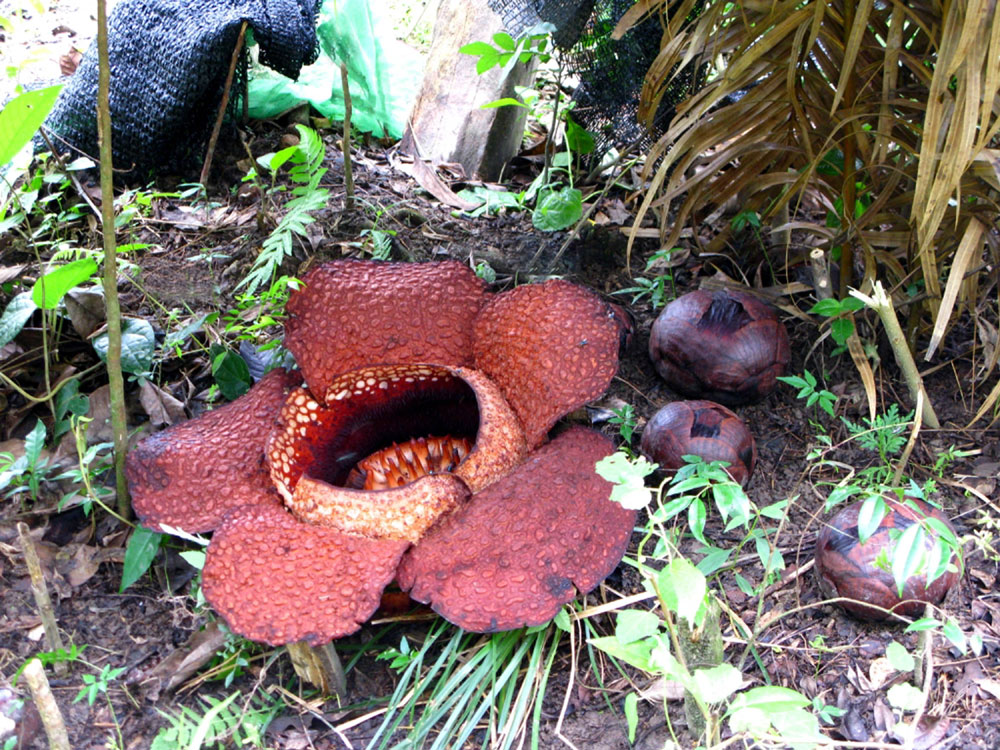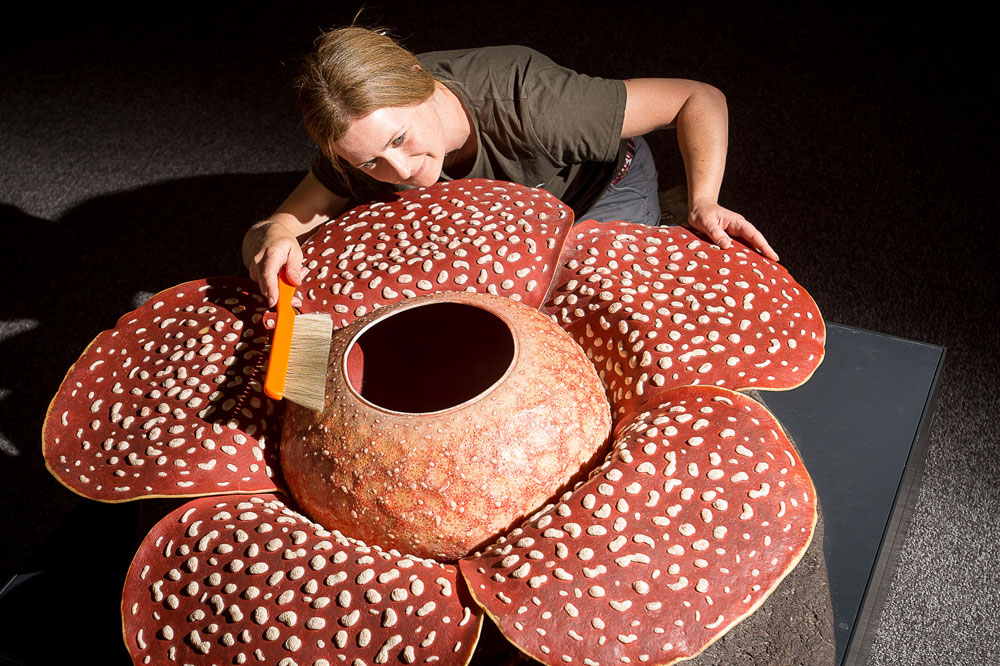SCIENTISTS hope to grow the world’s largest flower in Scotland – but beware, it smells like rotting flesh.
Rafflesia arnoldii grows in the forests of Southeast Asia and has been described as “perhaps the most largest and magnificent flower in the world”.
The 10kg “corpse flower” grows up to 1 metre in size and is extremely rare given the specific conditions needed for it to grow.
But now, scientists at the Royal Botanic Garden Edinburgh (RBGE) are trying to find a way to bring the plant to Scotland.

And if they are successful, they expect thousands of Scots to queue up to visit the other-worldly species.
The rare, parasitic, rootless and leafless plant grows by infecting a particular vine – the Tetrastigma – and lying undetected for years before breaking through the bark in bud-form.
The buds swell over several months before finally bursting into giant five-petalled reddish-brown and cream mottled flowers which smell of rotting flesh.
The flowers only last for about seven days, during which time they attract carrion flies who transport their pollen from male to female flowers.
Despite efforts, the flower has never been successfully cultivated out of Southeast Asia – but that could change in the near future.
Next week, the RBGE is holding a conference which will see over 100 scientists from across the world gather to talk about endangered plants and how they can be brought into cultivation.

Among those visiting will be scientists from Southeast Asia who have studied Rafflesia arnoldii, who will share ideas and growing techniques with Edinburgh’s horticulturalists.
In preparation for their arrival, a life-size replica of the rare flower has been loaned from the National Museum of Scotland and now takes pride of place in the middle of a lecture theatre where the talks will take place.
Louise Galloway, lead horticulturalist at the RBGE, said: “One day we hope to attempt to cultivate a Rafflesia arnoldii in Scotland – there is no firm plan as of yet but we would love to try.
“Some of our glasshouses already replicate a Southeast Asia environment, and we have a Tetrastigma vine too, which means that half the equation is already complete.
“Next week we will talk to scientists who study the plant in its natural environment, to try and get a better idea of how to best cultivate it here.
“If we are lucky enough to try it could take many, many years for the flower to show, but it would be brilliant to bring it to Scotland.”
Last year the RBGE’s titan arum plant, which they had been nurturing for 12 years, flowered for the first time and produced a strong stench of rotting flesh.
Louise said: “Thousands of visitors flocked to see the plant – people are interested in nature’s oddities.
“If we were able to cultivate the Rafflesia I would expect people would travel a long way to come and see it. It looks like something out of a science fiction movie.”

